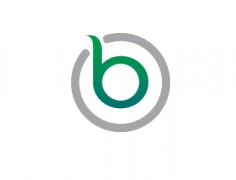Hospitals advertise constantly these days and, by and large, the ads don’t say much that you need to pay attention to. But if you notice that a nearby hospital promotes itself as a “stroke center,” do take note — a new study from the University of Toronto reports that being treated at a stroke center vastly reduces your likelihood of suffering serious permanent disability from stroke.
What’s a Stroke Center?
Here in the US, a hospital that wants to be certified as a “primary stroke center” by The Joint Commission must meet very specific criteria, including team training for staff. With stroke, time is everything. At stroke centers, everyone — from the ambulance staff responding to 9-1-1 calls all the way through the doctors and nurses working in the emergency room — expedites diagnosis and treatment to be sure patients who would benefit from the clot-busting drug tissue plasminogen activator (tPA) get it in time to help.
I called Ralph L. Sacco, MD, MS, professor and chairman of neurology at Miller School of Medicine, University of Miami, and now the incoming president of the American Heart Association, and he reiterated how important it is to know in advance how to deal with a stroke emergency. “For every minute we delay treatment and dispensing tPA, millions of brain cells die,” Dr. Sacco said. “The recommended window for successful treatment is four and one-half hours — but within that time and before the drug can be given, the symptoms of stroke have to be recognized, 9-1-1 called, the patient taken to a hospital, and a CT scan performed. That’s not a lot of time to work with.”
How You Can Be Prepared
“Learn which primary hospitals are certified for stroke treatment and which are not,” Dr. Sacco advised, noting that there are stroke centers in most urban areas. Look online, at www.strokecenter.org/strokecenters.html, where you can click on your state to find a list of primary stroke centers accredited by The Joint Commission.
Refresh your memory on the warning signs for stroke, from The American Stroke Association:
- Sudden numbness or weakness of the face, arm or leg, especially on one side of the body.
- Sudden confusion, trouble speaking or understanding.
- Sudden trouble seeing in one or both eyes.
- Sudden trouble walking, dizziness, loss of balance or coordination.
- Sudden, severe headache with no known cause.
Another quick way to test is to have the person smile. If one side of the face droops, stroke may be suspected.
Finally, remember that it is always best to call 9-1-1 immediately if you suspect stroke in yourself or a companion. Research has shown that people who walk into an emergency room on their own may be treated with less urgency. A trained emergency team responding to a 9-1-1 call not only can get you to the right hospital, but also can start some treatment right away and help speed you through the admission process.
Source(s):
Ralph L. Sacco, MD, is chairman of neurology, Miller Professor of Neurology, Epidemiology, and Human Genetics at the Miller School of Medicine, University of Miami. Dr. Sacco will serve as president of the American Heart Association for the 2010-2011
